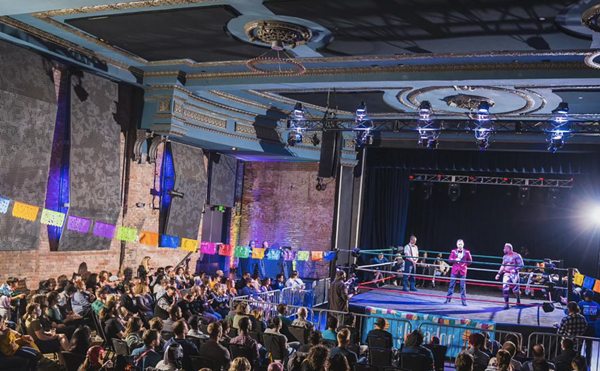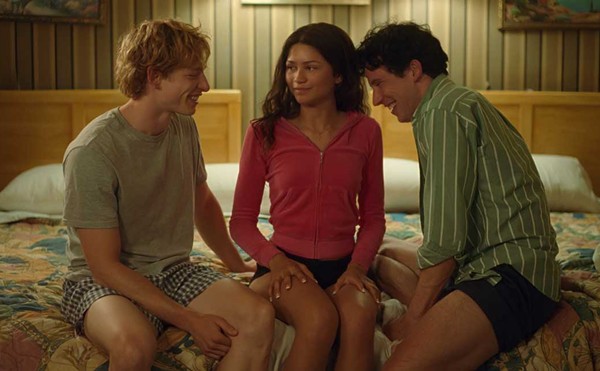Footsteps in the Fog: Alfred Hitchcock’s San Francisco puts its focus in its title. Authors Jeff Kraft and Aaron Leventhal zoom in on three films by the Master of Suspense that feature the Bay Area — Shadow of a Doubt (1943), Vertigo (1958) and The Birds (1963) — and a half-dozen of those (from Rebecca to his last, Family Plot) where its sites acted as stand-ins or models for other locations (from Monte Carlo and the English countryside to Cuba).
“I’ll always think of this lovely town. It’s a place of hospitality, kindness, and homes,” Shadow of a Doubt’s urbane villain, Uncle Charlie, muses. He could have been singing the praises of Santa Rosa, the director’s choice as an ironic foil to Charlie’s character. Like the setting of Shadow screenwriter Thornton Wilder’s famous play Our Town, this “lovely” community is that all-American fantasy, a place of civic and domestic decency. But the ever-ironic Hitchcock unfolded an insidious horror show on Santa Rosa’s well-policed streets and in its prim parlors more than 40 years before director David Lynch would pull off a more surreal version of the same trick in Blue Velvet’s fictional Lumberton.
Kraft and Leventhal’s approach to this picture shows their method. After opening the historical, cinematic and Hitchcockian contexts of the film, they synopsize and practically put every single location shoot under their microscopic gaze. They offer precise locations gleaned from studio documents or their own research — including the history and current state of each site — and illustrate it all with their own maps and photographs, and with studio production stills. Footsteps in the Fog is exhaustive to the point of being exhausting to all but the most dedicated or fanatic Hitchcock connoisseur or student.
The portrait that develops from hundreds of pages filled with details is of a master director who was at least as obsessed with minutiae as the authors are. Kraft and Leventhal reveal how even Hitchcock’s studio shots were based on meticulous research, not unlike their own. From the cityscape backdrop of Midge’s apartment set in Vertigo, they deduce an actual address for her “upscale artist’s studio,” placing it on top of San Francisco’s high-toned Telegraph Hill. They then show that when the movie’s anti-hero, Scottie, drives there, he perfectly conforms to a geography that may not be of our San Francisco, but that is consistently Vertigo’s.
Kraft and Leventhal highlight how Hitchcock’s geographic references are revealed in dialogue as well as images. When The Birds’ troubled, jet-set heroine, Melanie, leaves a pair of caged love birds outside of hero Mitch’s San Francisco apartment, a “nosy neighbor” gives her accurate directions to his weekend residence in Bodega Bay: “an hour and a half by freeway or two hours if you take the coast highway.” The authors even include the denial by the Division of Highways of the director’s request to stop traffic on Highway 1, causing him to shoot on Bay Hill Road instead.
According to Footsteps, this is but one of the stumbling blocks Hitchcock faced. The book also reprints a newspaper article from The Carmel Pine Cone that calls his Rebecca crew’s alteration of Monterey’s Point Lobos coast (as a stand in for Monte Carlo’s) “an outrage.” The crew suffered “severe cases of poison ivy,” but for their troubles they helped earn the director his only Academy Award for Best Picture.
“Hitchcock was a master of composing visually dramatic shots, tying the geographic characteristics of the location to the setting and plot,” Kraft and Leventhal write. The director didn’t invent location shooting, but he did invent a new role for the settings of his films by making them more than backgrounds with the occasional stroke of local color. His locations are mega-characters that may be at least as expressive as some of his actors.
Footsteps in the Fog may be the ideal book for anyone who has ever wanted to retrace the master’s steps around the Bay Area.
James Keith La Croix writes about film for Metro Times. E-mail [email protected].





